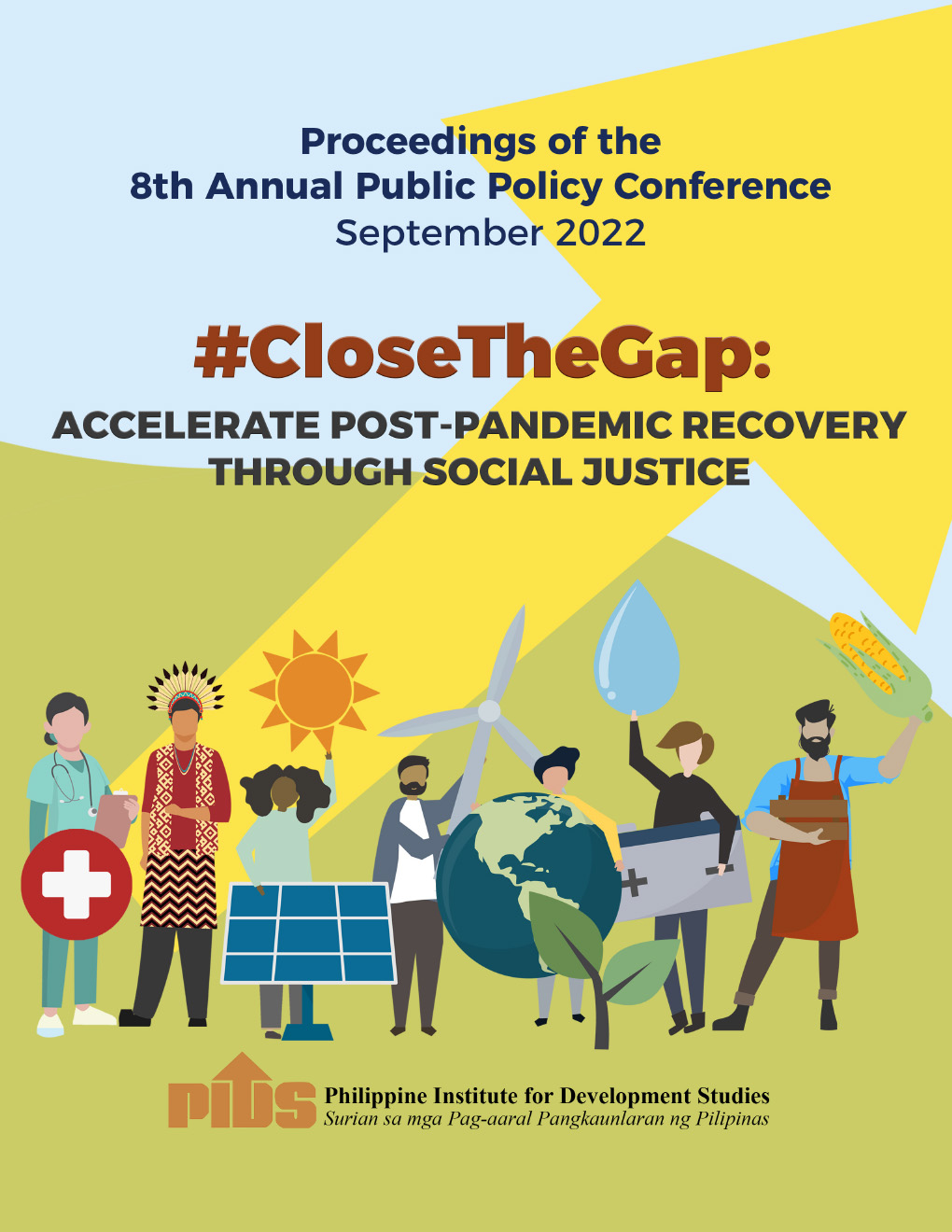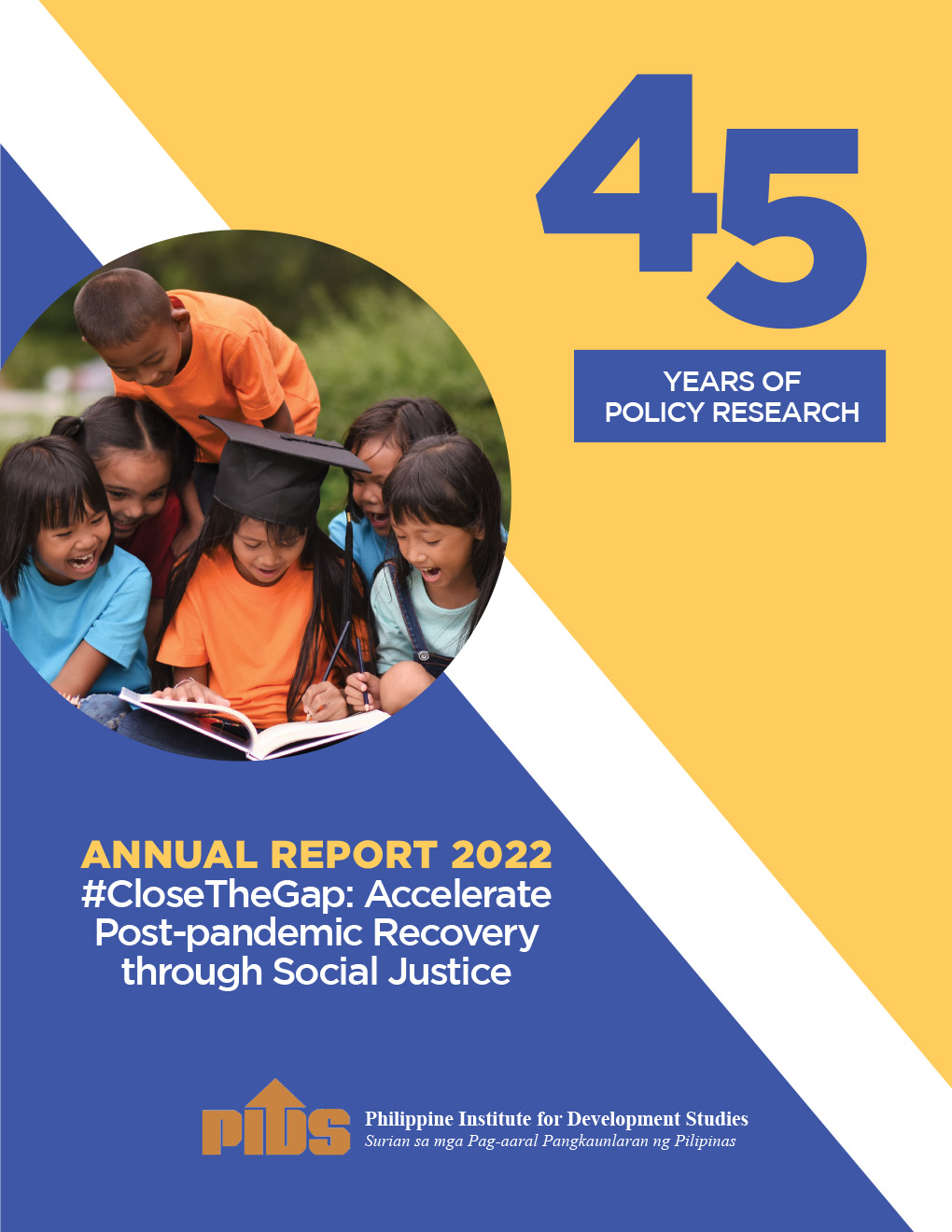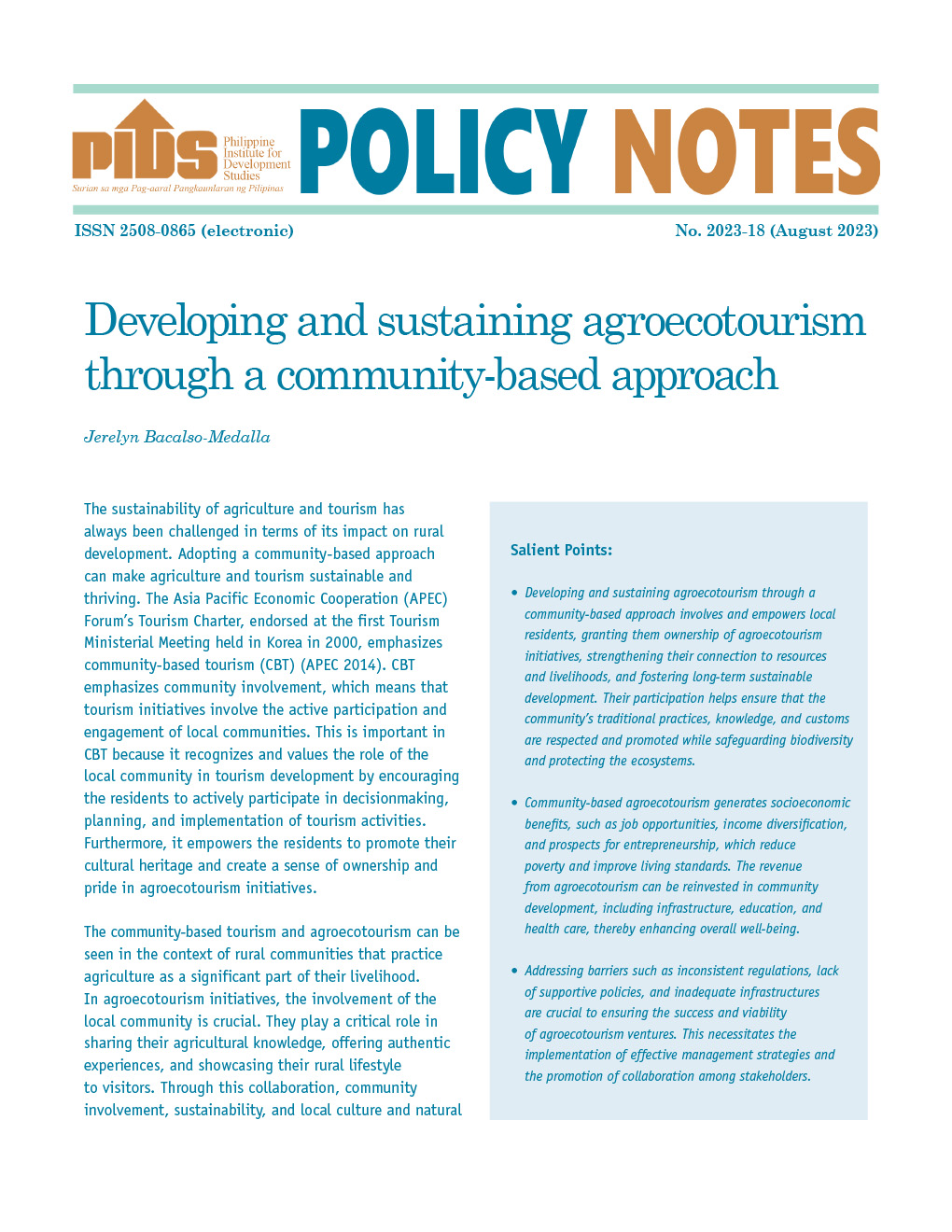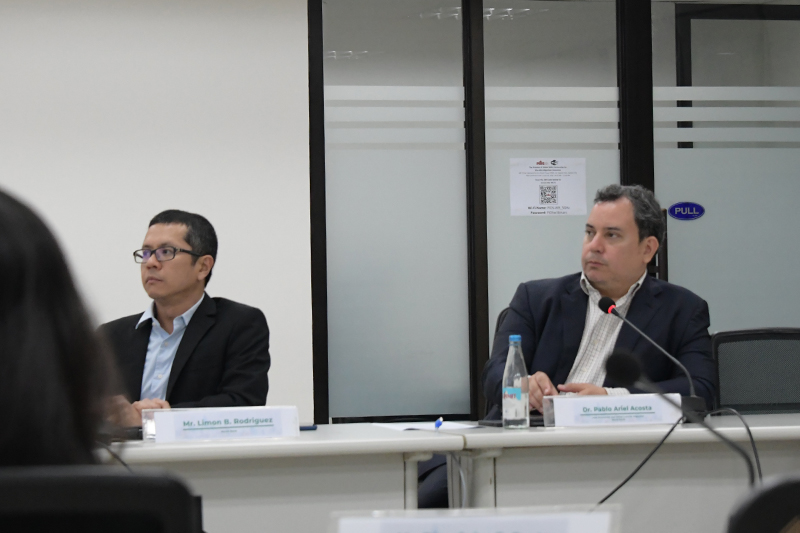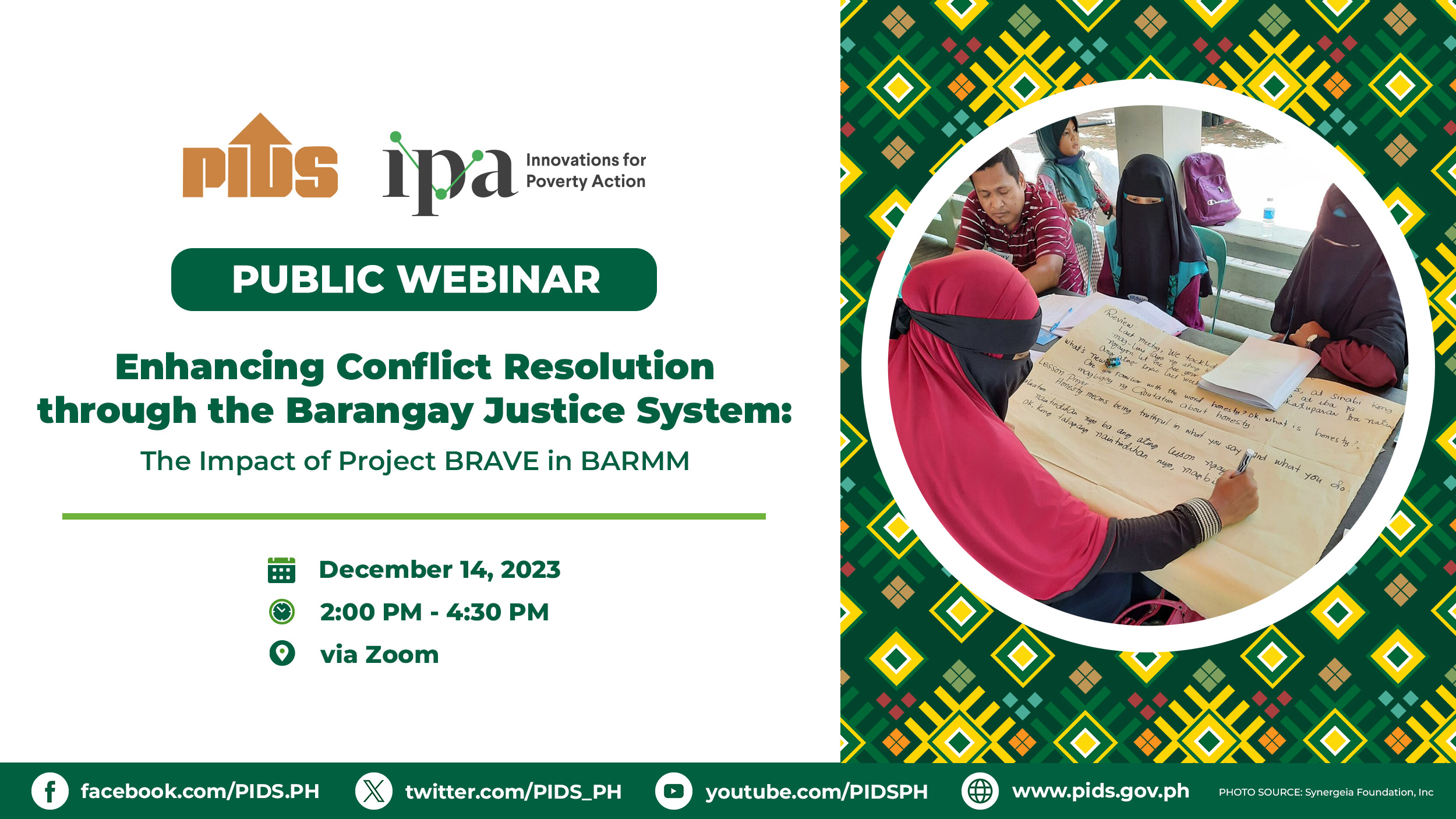MANILA, Philippines – Rodrigo Duterte has reached the half-way mark this year after winning the presidency in May 2016.
During his 4th State of the Nation Address (SONA) on Monday, July 22, he is expected to enumerate his administration's major accomplishments in the last 3 years. While some targets have been met, there have been some major misses as well.
From the economy to peace and order, from poverty and the country's standing in world rankings, here's how President Duterte fared in his mid-term. See them in charts and in numbers.
Economy
Steady GDP but slowing down
The Duterte administration has maintained the annual gross domestic product (GDP) growth rate above 6% in his first 3 years. Since 2016, however, the yearly GDP growth rate has been on a decline. Quarterly, the highest GDP growth rate was obtained in the 3rd quarter of 2017 at 7%, but in the 1st quarter of 2019, it was at a 4-year low at 5.6% despite it being an election year.
The slowdown is mainly due to the delayed passage of the 2019 national budget after an impasse in Congress, which led to the reenactment of the 2018 budget, said economist AJ Montesa of the Action for Economic Reforms. "The missed chances to spend on social services as well as on infrastructure certainly had a pronounced effect on the country's growth performance."
Economist JC Punongbayan also attributed it to the “declining share of private investments and net exports on the demand side, and weaker agricultural and industrial growth on the supply side."
Among countries in the Association of Southeast Asian Nations (ASEAN) in the last 15 years, the Philippines' GDP growth rate has been in the top half of the pack since 2012. In 2018, however, the Philippines was outperformed by Cambodia, Laos, and Vietnam.
Punongbayan said these countries had been "catching up" economically, in terms of GDP and GDP per capita. "Poorer countries really tend to grow faster" in what is called convergence, he added. As such, Punongbayan said, the Philippines' economic managers should "reassess the [country's] economic standing in ASEAN."
Survived an inflation spike
The inflation rate spiked in September and October 2018 when it reached 6.7%, a 9-year high and the highest among ASEAN at the time. "The tighter supply of agricultural products, especially rice, coupled with the big rise in gasoline prices – an effect of both high prices of oil, devaluation of the peso, and the effects of TRAIN law – are clearly at play," said Jose Ramon Albert, senior research fellow at the Philippine Institute for Development Studies. TRAIN refers to the Tax Reform for Acceleration and Inclusion law.
The inflation rate has since gone down to 2.7% in June 2019, the 5th straight month that it settled within the government's target range and the lowest since September 2017. Albert said this shows that inflation "would have been better managed" and the government "should have anticipated inflation expectations when they pushed for TRAIN 1."
Widest deficit recorded despite sustained revenue growth
Government revenues amounted to P2.9 trillion in 2018, sustaining the upward trajectory since 2009. Tax collections reached a record high of P1.962 trillion, but still missed the government target of P2.044 trillion.
“This has been an expressed objective of the Department of Finance – to increase the tax base as well as the efficiency in collection,” said AJ Montesa of the Action for Economic Reforms. He said a major contributor to this is the passage of the Tax Reform for Acceleration and Inclusion or TRAIN law.
Total revenues grew by 12.62% year-on-year in 2017, and increased by 15.25% in 2018. This is higher than the revenue growth ratings during former president Benigno Aquino III’s first two years, which stood at 12.58% and 12.87% in 2011 and 2012, respectively.
“While the first package of tax reform reduced the personal income tax (PIT) rates for most Filipinos, resulting in a lower revenue base from PIT, it also updated the excise taxes on several commodities, addressing the revenues erosion from decades' worth of inflation and changing economic circumstances,” he explained.
But expenditures also reached P4.3 trillion along with the revenue growth, resulting in a P558.3 billion deficit or 3.2% of the national GDP. It exceeded the government’s budget deficit cap of P523.6 billion for 2018 or 3% of GDP.
>“The wide deficit that we experienced in 2018 (which might also continue into 2019) is simply a reflection of the government's agenda of higher spending on social services. Policies such as the Free Tertiary Education, Universal Health Care, (sensible) salary increases for government employees and uniformed personnel, as well as Build, Build, Build all tend to ramp up government expenditure and result in deficit spending,” Montesa explained.
On top of this, the Duterte administration also approved a P1,000-increase in pension hike, waived government document fees for first-time jobseekers, and made railway fares free for students.
While this is the widest deficit recorded since 1986 (the earliest year available), it is not the worst ratio recorded. This is also the first time the Duterte administration missed its deficit-to-GDP cap.
Finance Secretary Carlos Dominguez III also remains confident that the government will be able to manage the country’s budget deficit in 2019 since the country is spending on its massive infrastructure program. In 2016 and 2017, the country posted 2.4% and 2.2%, respectively, which are well within the Duterte government’s target fiscal deficit-to-GDP ratio of 3% as laid out in the Philippine Development Plan.
“These may certainly be worth it, especially if these result in investment in human capital and increased economic productivity down the line. We'll eventually have to pay our debts, but if all goes well, we'll be in a sustainable position to do so anyway,” Montesa added.
Slower growth amid higher foreign direct investments
President Duterte’s first 3 years in power sustained the upward growth of foreign direct investments in the previous years. As of February 2019, the latest available data, total FDI in the country registered $746 million net inflows. This brings the total FDIs so far in 2019 to $1.36 billion.
Net inflows of FDIs amounted to $10.3 billion in 2017, Duterte’s first full year in office. This is the highest annual amount recorded by the BSP since 2005. In 2018, Duterte’s 2nd calendar year in power, net FDI inflows registered $9.8 billion – just a slight decrease from the previous year but still short of the government’s targets.
While the Duterte administration has registered high FDI amounts in his first 3 years, the annual growth rates in his first two calendar years are significantly lower than the previous years, which stood at 23.88% in 2017 and even decreased by 4.43% in 2018. In contrast, the administration of former president Benigno Aquino III registered annual growth rates of 87.52% and 60.20% in 2011 and 2012, respectively.
The country is also still lagging behind its Southeast Asian peers despite the increase in FDI inflows. The Philippines has been overtaken by Indonesia, Vietnam, and Thailand since 2000.
Still, economist Carlo Asuncion said the Duterte administration’s efforts should not be discounted. “Although the work of previous administrations should be highly noted, the Duterte government, particularly the economic managers, has worked on furthering economic changes through fiscal reforms, such as the TRAIN law and other business improving legislation,” he said.
More debt, but better paying ability
As of April 2019, the Duterte administration added P1.84 trillion to the national debt since the start of his term in June 2016. In the same period under the Aquino administration, only P726 billion was added.
However, in 2018, the ratio of the national debt to GDP was only at 41.9%, the lowest recorded since 1986. "The country's debt situation remains manageable, partly because growth still remains relatively high," said economist JC Punongbayan.
The debt-to-GDP ratio has actually been declining steadily since 2004, when it reached its peak at 74.4%. Besides the country's steady growth and the contributions of overseas workers and the BPO industry to the economy, Punongbayan said that "debt has become more manageable, thanks in part to the fiscal consolidation done since the Arroyo [presidency]."
A lower debt-to-GDP ratio "indicates that we are not at risk of defaulting on our debt obligations," added economist AJ Montesa. He also explained that the amounts added to the national debt "will typically seem to go up most of the time, frequently reaching 'record highs,' but this is mostly because prices are also usually generally rising as well."
However, Punongbayan warned that the government "will do well to be cautious when it comes to new debt coming from sources like China," which is embarking on infrastructure projects under its "Belt and Road Initiative" program and is also offering "easy but demonstrably onerous loans to developing countries."
The Philippine stock market hit several highs during the first 3 years of the Duterte administration, riding the upward trend since 2009.
When President Duterte took office in June 2016, the Philippine Stock Exchange index (PSEi) was on a bull run. The local index even breached the 8,000-mark for the first time in July that year, hitting a high of 8,102.30.
Ruben Carlo Asuncion, Unionbank’s chief economist, explained there are a lot of factors that can affect the movement of the stock market – both local and international.
“The influence of the US markets should be emphasized because 2016 was also the start of the Trump administration and the US has been riding on its longest economic expansion to date since 2009. In other words, the PSEi was in a very good place,” he explained.
Asuncion added that a new administration usually prompts higher closing prices, which reflects the public’s perception of the platforms to be initiated by the new government.
Historically, the PSEi started high during the Arroyo, Aquino, and Duterte administrations. The market was on a downward trend when Estrada came into office in 1998, which happened during the Asian financial crisis.
“The PSEi usually tracks the movement of the US stock markets. The PSEi ‘co-moves’ with the Dow Jones and other significant US markets. It is a day-to-day co-movement. This means that usually, if the Dow Jones ended high, expect that the PSEi will respond with the same behavior,” Asuncion added.
It was also under Duterte that the PSEi hit the 9,000-level for the first time in January 2018. By end-January 2018, the composite index hit an all-time high of 9,058.62. Asuncion said one specific government policy that contributed to this is the implementation of the Tax Reform for Acceleration and Inclusion or TRAIN law.
“The TRAIN law has increased disposable income of most of income tax payers. This has impact on retail and real estate businesses, for example. Thus, indirectly, listed companies on PSEi can be positively affected by the increase in domestic private consumption,” he said.
However, since then, the local market failed to sustain the momentum. It entered a bearish period, even dropping to a low of 6,843.83 on November 13, 2018.
Moreover, as of June 30, no company has filed for an IPO so far in 2019 – an indication that there is a lack of confidence in the local stock market. In 2018, only DM Wenceslao listed in the local bourse.
Since January this year, the local barometer has been stabilizing at the 7,500 to 8,100 levels. The PSEi closed at 7,999.71 on June 28, registering a mere 2.61% increase since June 2016.
Across administrations since Estrada, the local stock market grew the most under the Aquino administration. The PSEi increased by 95.02% during his first 3 years in power.
War on Drugs
Drug War: Deaths in anti-drug operations slow down
According to the government’s counting initiative #RealNumbersPH, 5,375 people have died in police operations related to the drug war as of June 30, 2019. However, the Philippine National Police (PNP) reported mid-June that over 6,600 drug suspects have died as of May 31.
Most of the deaths occurred from July 1, 2016 to October 10, 2017, when the operations Double Barrel (July 1 to October 25, 2016), Double Barrel Alpha (October 26, 2016 to January 30, 2017), and the first half of Double Barrel Reloaded (March 1 to October 10, 2017) were in effect.
Double Barrel Reloaded was put on hold in October 2017 due to public scrutiny and investigations into the death of 17-year-old Kian Loyd delos Santos, who was gunned down in August of that year.
The operation was back on track on December 5, 2017, this time with new guidelines. The PNP vowed the operations would be “less bloody, if not bloodless.” The total number of deaths for that time period makes up around 28% of the total since the drug war started.
However, Carlos Conde, Human Rights Watch’s researcher for the Philippines, said that calling the drug war “less bloody” is self-serving for the PNP. “Also, it is offensive, as if the fact that only this number of people are being killed makes the brutal campaign more acceptable,” he added.
Though the numbers have slowed down, said Conde, the killings have expanded outside of Metro Manila, where recordings of these killings could be less consistent. “Absent any credible and competent counting, who's to say that it is less bloody now?” Conde asked. “We can't trust the police to make any assessments of how the drug war is done precisely because the police are the ones complicit in the killings.”
Conde also maintained that the government has been managing or manipulating the numbers they publish. He said that during the first year of the drug war, the government seemed to be “proud” of the death toll, but officials stopped publicizing figures on homicide cases under investigation (HCUI) when Filipinos began to express indignation.
#RealNumbersPH showed that as of June 16, 2017, there were 8,200 HCUI, which refer to murder and homicide cases excluding killings by cops in police operations. Based on PNP documents obtained by Rappler, the number of HCUI by June 11, 2018 stood at 23,518.
Conde advised that moving forward, the Duterte administration should look at the drug issue from a public health perspective and make harm reduction a cornerstone of its anti-drug campaign.
Criminality
Crime volume on the decline
The crime volume from 2016 to 2018 has been declining, following a sharp increase in 2013. Meanwhile, crime solution efficiency rate during those years increased, after a decline in 2013.
The increase in crime volume in 2013 was caused by a change in methodology that year, as explained previously by former Philippine National Police (PNP) spokesman Brigadier General Reuben Theodore Sindac. It includes, he said, data from barangay blotters and reports from other law-enforcement agencies, while the numbers from previous years only included incidents reported to PNP units.
At the time, the Directorate for Investigation and Detective Management (DIDM) audited police blotters nationwide to catch underreporting of crime incidents.
The PNP also reported a “downward trend” in weekly crime incidents reported in the National Capital Region in the latter half of 2014. They attributed this to “Operation Plan Lambat-Sibat,” wherein police commanders' reports were verified by Camp Crame officials who reviewed blotters.
Before Lambat-Sibat, the PNP did not have a systematic way of gathering and verifying its crime data –in many cases, crime statistics were doctored to make police commanders look better and their superiors happy.
Lambat-Sibat was discontinued in 2016 and has since been absorbed into the “National Crime Reporting System.” According to the PNP, there is no difference between the two in terms of system and procedures, except that they have since stopped requiring all commanders and chiefs to present their data to the national headquarters.
Crime volume is the total number of index and non-index crimes, regardless of population. Index crimes are those like murder, homicide, robbery, theft, and rape, which occur regularly across all cities, such that its number can be an index or guide as to how crime infested a city is. Non-index crimes are those that are covered by special laws like illegal logging and gambling or by local ordinances like being shirtless and drinking in public.
The crime rate measures crime volume per 100,000 population, but the data for 2017 and 2018 are not yet available at the Philippine Statistics Authority (PSA) or the PNP.
SC, lower courts have more cases than outputs
Since the spike in 2010, the Supreme Court had lower case inputs – cases which are pending, new, and reinstated – with no more than 17,000. When the Duterte administration started, the lowest case inputs were seen with 14,491 in 2016 and 14,411 in 2017. Fewer case outputs – cases which are transferred and/or disposed – were also seen during those years following low records in 2012 with 6,078.
Two factors may have contributed to the low case outputs – case backlogs and manpower.
As of December 2017, there were 8,726 pending cases in the SC. This was a little bit higher than 8,244 in December 2016. In a Rappler Talk interview, former SC associate justice Vicente Mendoza said that there should be a committee that could screen “'unmeritorious' cases” to help the SC decrease its backlog.
Under Duterte, some justices stayed just two years or less and vacancies were not filled immediately. The slow pace of some of the justices who had backlogs was also a contributing factor.
Like the Supreme Court, lower courts are also swamped with millions of cases – cases which are pending, newly filed, revived/reopened, and received from other salas.
In 2016, the lower court recorded a high case input of 1,182,820 with 34.42% of case outputs.
Meanwhile, at the Sandiganbayan, the number of cases filed against public officials before the anti-graft court spiked in 2017, the first full calendar year of Duterte's term, similar to what happened in the Ramos presidency. However, this also increased the number of pending cases at the Sandiganbayan.
In addition, from 2010 to 2017, disposed and archived cases were fewer than the number of cases filed, revived, or adjusted. In 2018, the anti-graft court showed a bit of improvement: there were only 940 cases filed, 1,075 disposed cases, and 121 archived.
Infrastructure
Build, Build, Build: 46 projects ongoing
Of the 75 flagship projects under President Duterte's "Build Build Build" infrastructure program, 37 had been approved by the National Economic and Development Authority (NEDA) as of April 2019. In all, these amount to P1.56 trillion. Among them, 14 are expected to be done by the end of Duterte’s term in 2022, while the other 23 will extend beyond 2022. On the other hand, 29 projects await approval from the Investment Coordination Committee (ICC) and confirmation from the NEDA Board (with 5 planned to be completed by 2022, and 24 beyond it), while 9 do not require ICC/NB approval (7 are expected to be done by 2022, and two beyond it).
These numbers, according to economist AJ Montesa, are par for the course for large-scale infrastructure projects.
Separately, NEDA said 46 of these 75 projects are under different stages of implementation (from budgeting/financing to construction) as of April 2019. Nine of these projects are under construction, while two have already been reported as complete: the improvement of remaining sections along the Pasig River from Delpan Bridge to Napindan Channel (JICA-assisted, as part of the Pasig-Marikina River Channel Improvement project) and the Pulangi 4 Selective Dredging Phase 3 by the National Power Corporation (funded in the national budget).
So far, the biggest of these 37 NEDA-approved projects are under the Department of Transportation (DOTr). The Metro Manila Subway Project-Phase 1 is the most expensive, with a budget of P356 billion, followed by the PNR (Philippine National Railways) South Commuter Line from Tutuban to Calamba (P344 billion), and the PNR North 2 from Malolos to New Clark City (P283 billion).
Infrastructure boom
The DPWH's share in the national budget has gotten bigger every year since 2012, and this trend continued until 2018 under the Duterte administration. From 11.65% in 2015 before Duterte assumed office, the DPWH's share went up to 16.46% in 2018. In 2019, it dropped slightly to 12.4%.
This increase in the share of allocations also coincided with the DPWH's improvement in meeting targets for regular infrastructure work (outside of the big-ticket Build Build Build projects), at least for 2017.
In its accomplishment report to the Commission on Audit, the DPWH said that in 2017, it almost met – or even exceeded – the targets it set for nearly all performance indicators (like roads paved or flood control structures completed) in their allocation in the national budget. The data showed they even outperformed themselves compared to 2015 and 2016.
Employment
Employment rate improves, quality jobs are generated
The employment situation in the country continually improved under the first years of the Duterte administration. According to economist AJ Montesa, the administration “benefitted from the sustained economic growth in the past decade.” This also indicated that Build, Build, Build provided more jobs, particularly in the construction sector.
In 2017, the employment rate slightly decreased to 94.3% from 94.5% in 2016. In the year that followed, the administration redeemed the drop with 94.7%, the highest employment rate, based on available data. The unemployment rate had been recorded below 8% since 2005; in 2018, it stood at 5.3%. Montesa said that this suggests a “clear trend [in which] more jobs are being created and the labor force moves closer towards 'full employment.’”
PSA data also showed there was an increasing trend among employed Filipinos who were working in the services industry. From 55.6% in 2016, it rose to 56.3% in 2017 and continued to increase to 56.6% in 2018. According to Philippine Institute for Development Studies senior fellow Jose Ramon Albert, this suggests that people have shifted to the non-agricultural industry; hence, quality jobs.
The underemployment rate – the proportion of employed who want more hours at work or a higher paying job – relatively decreased. From 18.3% in 2016, it consistently dipped to 16% in 2017 and 2018. This lower underemployment rate, according to Montesa, is an indicator that “more people are generally satisfied with their current jobs and the compensation they are provided."
It is also noteworthy that "unemployment is not a development issue as the poor can't afford to stay unemployed, and that unemployment is a middle-class problem," Albert said.
Poverty
Self-rated poverty and hunger: Struggling to stay down
After a steady decline in self-rated poverty ratings in Social Weather Stations (SWS) quarterly surveys that began in September 2014, the numbers began to increase and fluctuate again in December 2016, a few months after Duterte’s first day as President.
Self-rated poverty began to increase again during the Duterte presidency, but the numbers always fell between a range of 42%-52% –a far cry from 66%, the highest rating that Filipinos gave in 2001 and 2002.
The highest self-rated poverty rating during the Duterte administration was in September 2018 at 52%, after which it decreased again in December of that year. Jose Ramon Albert, statistician and senior research fellow at the Philippine Institute for Development Studies, said this may mean that people in Luzon are losing trust in institutions, as the rise was due to an increase in Balance Luzon and Metro Manila.
Despite the reappearance of fluctuations in self-rated poverty during Duterte’s presidency, it was also during this time that the lowest percentage in the past 17 years was achieved – in September 2016 and March 2018.
As with self-rated poverty, the Duterte administration has sustained the decrease in Filipinos’ involuntary hunger.
Involuntary hunger was at a 14-year low in June 2018, with only 9.4% saying they experienced involuntary hunger at least once in the past 3 months.
Albert explained that since hunger is correlated with prices, the Tax Reform for Acceleration and Inclusion (TRAIN) law may have mitigated the effects of the increase in prices among the poor, hence the decrease in December 2018.
On the other hand, the highest rate was recorded in December 2017, when 15.9% of Filipino families said they experienced involuntary hunger.
These numbers follow a steep decline from September 2014 to June 2015, when involuntary hunger ratings went from 22% to 12.7%.
Alcoholic beverages and tobacco prices soar, education costs drop
Prices of nearly all commodity groups were on the rise in 2018.
Inflation rates in late 2018 were the highest recorded midway through President Duterte’s term. Price adjustments of major commodities either matched or reached their highest during this period.
The largest spike in the prices of alcoholic beverages and tobacco was recorded in November 2018, when costs for these items increased by 21.8% from 2017 of the same period. PIDS senior research fellow Ramon Albert confirmed that this was the effect of higher excise taxes on sin products.
An additional price increase on these can be expected as there were recently-approved bills that will further increase the excise taxes on such commodities in the coming years.
Food and non-alcoholic beverage prices also surged. Items from this group recorded a 9.7% inflation rate in September 2018 compared to prices in September 2017, an increase primarily caused by the upsurge of rice prices in 2018.
Meanwhile, education stood as the only item whose costs decreased over the last 3 years. Deflation of prices started in July 2018 when they dipped by 3.9% compared to July 2017. Prices have since continued to decrease, with most recent data recorded at -3.8% as of May 2019. “Definitely, this is an effect of the free tuition in SUCs,” Albert said.
As to how this could affect the quality of education, he said that several researchers at PIDS have “argued against this free tuition on account of unintended consequences on equity and quality.”
Rice prices
Wholesale prices of both regular milled rice (RMR) and well-milled rice (WMR) were at their highest in September 2018, when they were pegged at P43.12 and P46.04 per kilo, respectively. Retail prices of both types of rice were also at the highest around the same time, with RMR priced at P45.87 and WMR at P49.37.
Researcher AJ Montesa of the Action for Economic Reforms (AER) said a contributing factor to the rise crisis in 2018 included mismanagement of the NFA. “Di ba there were issues of corruption and smuggling, and sa imports nagkaproblema, ’di ba? So that’s the reason kung bakit nagkaroon ng shortage in rice and that’s why there were high prices.”
(Weren’t there issues of corruption, smuggling, and imports? So that’s the reason behind the rice shortage and that’s why there were high prices.)
However, since October 2018, the prices of rice have been on a downward trend, returning to levels in early 2018. As of June 2019, retail and wholesale prices of both WMR and RMR have each decreased by at least P6 per kilo in the last 8 months. WMR retail and wholesale prices are currently at P43.40 and P39.48, respectively, while RMR is at P38.90 retail and P35.73 wholesale.
This trend can be traced to the passage of the rice tariffication law in February 2019 which addressed supply issues by lifting import limits on rice.
Although consumers have benefited from the increased rice supply, stakeholders in the industry, mainly farmers, have expressed concerns about the rice tariffication law. The influx of imported rice was expected to put at a disadvantage farmers and the local rice industry, which can’t compete with the prices of importing countries.
Approval Ratings
Satisfaction, approval, trust in President still favorable
President Duterte, who has been enjoying favorable approval and trust ratings, so far, in his first 3 years, fared better than his predecessors despite controversies and criticisms that hounded his administration.
His net satisfaction ratings in the last 4 Social Weather Stations (SWS) surveys were on a steady upward trend, unlike his predecessors in the same timeframe. He even obtained his highest net satisfaction rating yet of +68 in June 2019, just a few days before the end of the first half of his term.
Before this period, however, Duterte's SWS ratings took a hit in June 2018 when both his net satisfaction and net trust ratings fell to the lowest figures so far, at 45% and 57%, respectively. The survey was taken days after Duterte called God "stupid" in a speech.
Likewise, in a Pulse Asia survey in September 2018, both Duterte's approval and trust ratings dipped to record lows. This was after Duterte enjoyed his highest approval rating yet and second-highest trust rating just in the previous survey in June 2018, conducted before his "God is stupid" remark. His dip in the September 2018 survey was also compounded by the 9-year-high inflation rate that was recorded at the time.
Nonetheless, his approval and trust ratings in Pulse Asia were unprecedented compared to previous presidents since 1986. In Pulse Asia's June 2019 survey, Duterte's approval and trust ratings were statistically unchanged (or within the margin of error) despite the maritime incident in Recto Bank where a Chinese vessel rammed a Filipino boat.
Filipinos consistently ‘fairly happy’ across the years
In the first months of President Duterte's term, starting December 2016, the share of Filipinos that felt “very happy” in their lives had consistently exceeded 40%. The last time this was recorded was more than 5 years ago, in December 2013. This is higher than the administrations of Arroyo and Aquino which recorded average ratings of 31.7% and 38.9%, respectively.
As Duterte’s years went on, however, more Filipinos shifted from being “very happy” to “fairly happy.” There was a significant drop of 18 percentage points from an all-time high of 57% in December 2017 to 39% in December 2018.
Inflation is one factor that affected the drop in rating. A few months before the last quarter survey on happiness was conducted, Filipinos felt the impact of the upsurge of inflation from 4.3% in March to 6.7% in September and October. According to polling firm Social Weather Stations, happiness declined in all classes especially among class D and E. In December 2017, the rating was 95% in class D and 90% in class E. A year later, in December 2018, it fell to 88% and 79%, respectively.
World Rankings
PH vs world: Improving economy, deteriorating human rights
Under President Duterte’s first 3 years, the Philippines continued to excel in global economic rankings but lagged in corruption and human rights-related indices.
The country’s ranking has been rising on the Innovations index before Duterte took office and it has so far sustained the upward trend under his administration. In 2018, the Philippines placed 73rd out of 126 countries, moving 10 ranks higher from 83rd place in 2015.
Likewise, the country’s ranking in the Economic Freedom Index initially improved during Duterte’s first year, maintaining the momentum since 2011. But it subsequently dropped in the following years, down to 70th out of 180 countries in 2019. Still, the country remains in the upper half of the index.
In contrast, the Philippines remains at the lower half of the spectrum in Transparency International's Corruption Perceptions Index. While the country ranked higher in 2018, at 99th out of 180 countries, its scores in the index had moved a little under Duterte. The Philippines has yet to get a score higher than 38, which it got in 2014.
In terms of press freedom, the country’s annual ranking at the Global Press Freedom Index has been falling since 2017, following targeted harassment of members of the press, particularly those who are critical of the Duterte administration. The Philippines remains at the bottom half of the index – at 134th place in the 2019 list – making it one of the worst nations for press freedom globally.
The rule of law also deteriorated under Duterte. In World Justice Project’s 2017-2018 release, the first Rule of Law report that has assessed Duterte’s administration, the Philippines dropped 18 places to the 88th spot. In 2019, the Philippines dropped even further, ranking 90th out of 126 countries – the lowest that the country has ever ranked since 2015, when the index first rolled out one overall score per country, instead of multiple scores across different factors which it had done before 2015. (READ: Where do we fall in world rankings?) – Rappler.com

